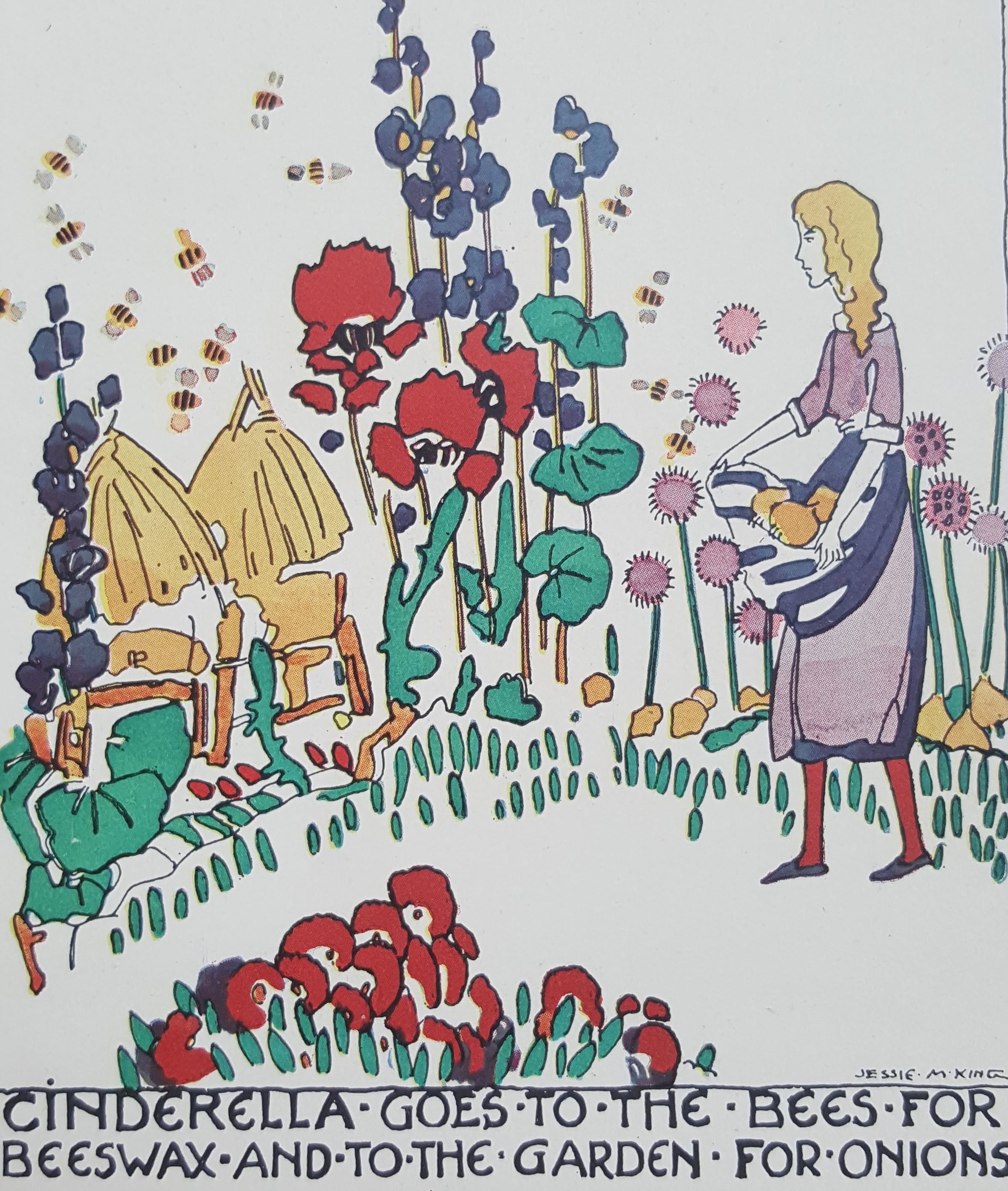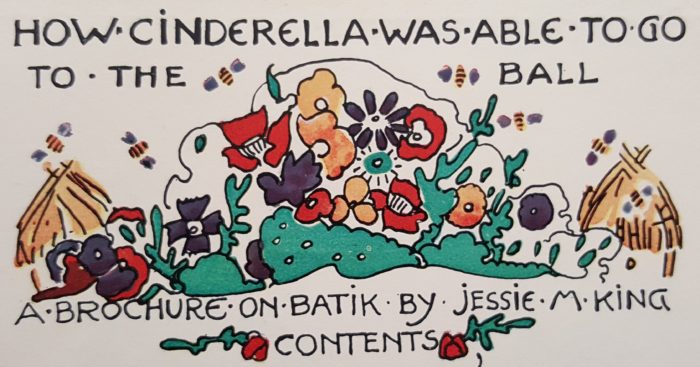
Title page illustration.
At the Cooper Hewitt Museum the study and teaching of design includes learning about the materials and techniques used in designing objects, textiles, and works on paper. The Cooper Hewitt Museum Library collection supports research into the study of design with books that demonstrate and document techniques and materials, the “how to” and “with what” of decorative arts and design.
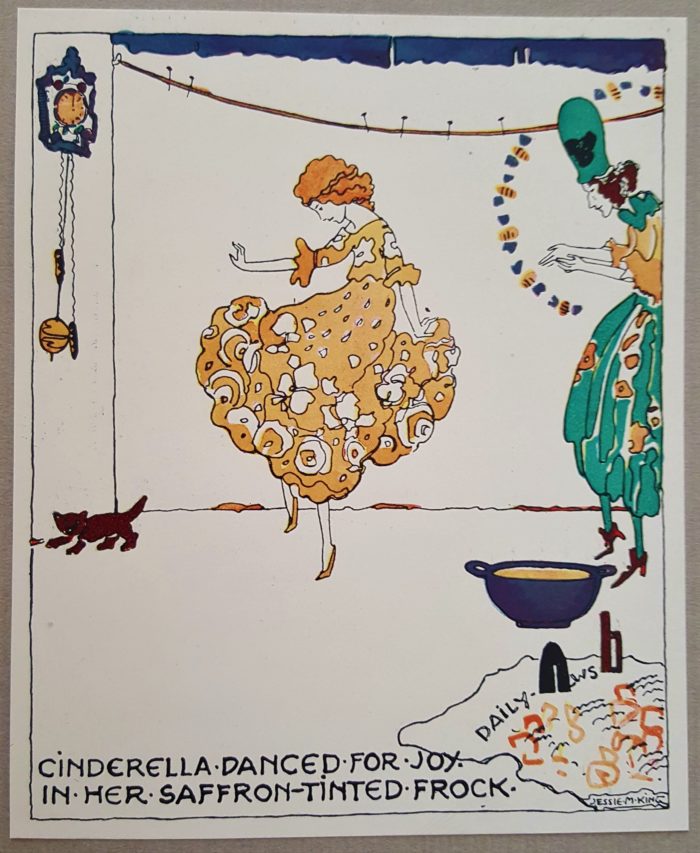
Cinderella’s newly made and designed batik ballgown.
In writing an instructional book using the old fairy story of Cinderella, Jessie M. King (Scottish, 1875- 1949) wanted to “awaken your imagination to that point where you want to look further into the wonderland of “BATIK.” This is a wax resist dyeing technique to create patterns and designs for textiles.
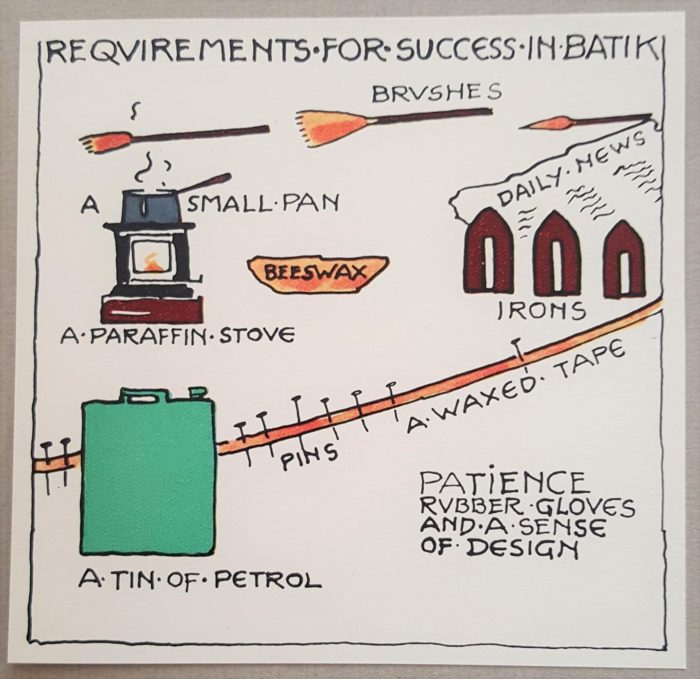
Tools needed to create a batik.
In King’s story, three sisters are invited to the annual Midsummer’s Eve dance but there are only two ball gowns available and neither one would fit Cinderella. In their attic is an old chest that is full of “BATIK”, left by her faerie godmother who had gone to live in Java for a time. While Cinderella cries over missing the ball, the godmother appears and finds a solution; they will re-use an old white silk frock. Cinderella is sent out to find some beeswax and onions. The godmother paints different flowers with the wax on the silk, pointing out that the designs she is painting are all from the flowers in the garden. The patterns and colors you can create are everywhere in nature. Cinderella, who watches and joins in the carefully explained batik design technique and dying process, now has a beautiful saffron yellow dress to wear to the ball. At the happy ending of the fairy tale, the godmother rattled off the following list to Cinderella: “Beeswax, brushes, newspapers, irons…PATIENCE…,”she then wagged her finger roguishly at her godchild, “…and a SENSE OF DESIGN.” In “Exit the Fairies,” Jessie King gives the reader more basic advice and ideas for the applications of the art of batik in textiles.
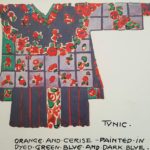
An example of a batik technique tunic.
Jessie M. King is best known for her drawings in the art nouveau style (more particularly the Glasgow school), but she also designed jewelry, greeting cards, fabric, ceramics and batik textiles, and especially, murals.
Elizabeth Broman is a Reference Librarian at the Cooper Hewitt, Smithsonian Design Library.
